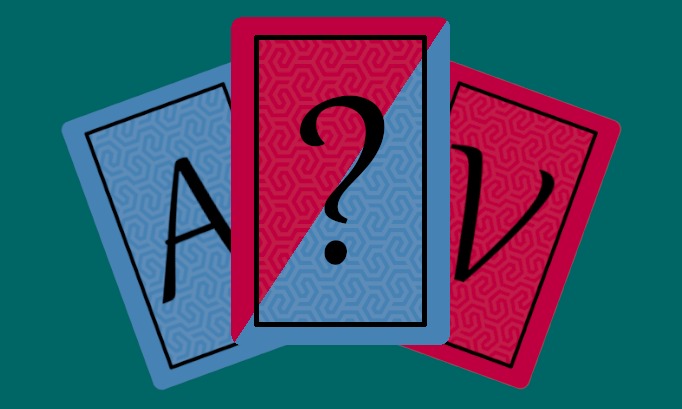
Description
Consider that there are three cards, one with both red faces, another with both yellow faces, and a third with one red face and one yellow face. Knowing this information, a player draws one of the cards and sees only one side.
The question is:
What is the probability that the color of the hidden face is yellow/red?
The problem formulation often leads to the assumption that the probability would be ½ between the two possible cards. For example, if the yellow face is revealed, it may be assumed that the chance of it being the red-yellow card or the yellow-yellow card is equal. However, the misconception lies in the fact that the sample space was not considered correctly, in which each face of each card should be considered, rather than the cards in isolation.
How to make it at school/home
It is recommended to present the game of the three cards alongside the Monty Hall Problem given their similarity. The setup would be quite simple; dark-colored cards with color markings on each side can be used to configure the situation described above.
There is a variety of possibilities for applying this concept, meaning additional cards can be produced so that students can perceive the different probabilities according to the different combinations.
A proposed set of materials to be used:
- Coins printed with two identical sides (HH) and (TT), two distinct sides (HT). (H=heads, T=tails).
- Opaque cups where the coins would be deposited.
Learn more
A comparison of the three-cards problem, Bayes and Monty Hall’s theory (in english) https://faculty.washington.edu/fm1/394/Materials/3-games.pdf
Aditional article exploring the three prisioners problem, Monty Hall and the problem of the three cards (in english):
Rubel, L. H. (2006). Connecting Research to Teaching: Good Things Always Come in Threes: Three Cards, Three Prisoners, Three Doors. The Mathematics Teacher, 99(6), 401-405.https://doi.org/10.5951/MT.99.6.0401
 Na imagem visualizamos o logotipo do projeto 'MatematiZou', escrito com letras de forma na cor verde-azulada. A letra “Z” está na cor branca dentro de um hexágono com pontas arredondadas preenchido na mesma tonalidade de cor do restante das letras.  Na imagem temos um mini caminhão branco de madeira, cuja caçamba é azul escura e está escrito em letras brancas “UFABC”. As rodas do caminhão são vermelhas e quadradas. Cada par de rodas do caminhão está em cima de uma pista com ondulações.  Na imagem, há várias pessoas participando do evento “UFABC para todos” no Ginásio da UFABC campus Santo André. Algumas pessoas estão ao redor de uma mesa com jogos que incluem copos, mapas, tabuleiro de xadrez, entre outros, e outras, estão vendo as exposições espalhadas por todo o ambiente.](https://matematizou.gradmat.ufabc.edu.br/files/LogoMatematizouTeal.png)

